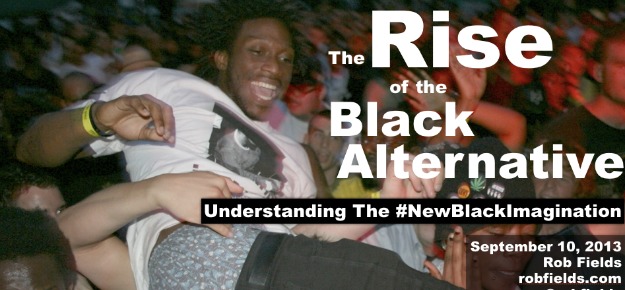The 2013 Afropunk Festival played host to almost 60,000 people over the course of its two days in Brooklyn, and probably 70% of them were either African American or part of the African diaspora. The success of Afropunk speaks not only to is success as a festival brand. More important, I think, is the presence of an audience that can support it. In that regard, this audience has been growing and evolving for a while, to the point where we see multiple expressions of what I call the #NewBlackImagination.
I define the #NewBlackImagination as a post-modern sensibility among some black folk, one that makes us re-evaluate our assumptions about race, gender, sexuality and–most importantly–representation. It’s about defying convention, breaking out of boxes, and questioning things we do, say or believe out of course. As I point out in the deck, you see it clearly
- in the comedy of Dave Chappelle, W. Kamau Bell and others
- the visual art of Kara Walker
- the films Medicine for Melancholy (Barry Jenkins) and An Oversimplification of Her Beauty (Terence Nance)
- in the music of a whole host of black rock, Afropunk and black alternative artists from Janelle Monae, Flying Lotus, Bad Rabbits, Ebony Bones, Living Colour, Mykki Blanco, Saul Williams and on and on and on. . .
The bottom line for brands: It’s WAY past time for brands to get smarter about how they try to engage this audience. There’s a broader, more nuanced palette from which to draw. Just relying on hip hop isn’t quite as compelling and it shows that you’re being lazy. That’s not a way to capture the #NewBlackImagination.
This is a new area for brands, especially if you’re used to thinking of hip hop as your go-to channel for reaching today’s black audiences. The black alternative crowd is a growing cohort, and it’s one you’ll need to pay attention to. To get things started, I’ve made some recommendations at the end of the presentation. Take a look, and let me know what you think.


